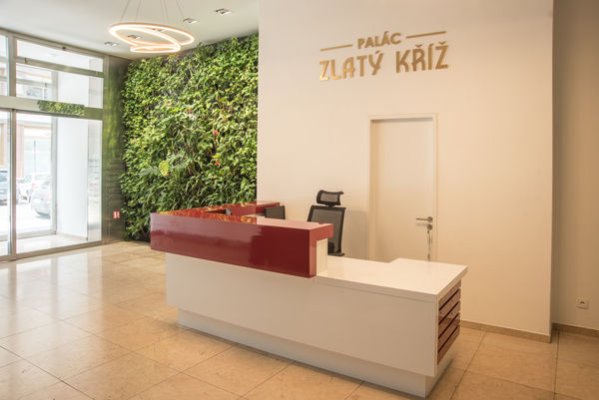History
Golden Cross Palace: 1931—
The building is registered on the list of immovable cultural monuments.
Monumental building No. 750 is located in a dominant position at the corner of Jungmannova street and Jungmannova Square. Across Jungmannova Street, it overlooks the impressive Rondocubist Adria Palace (both buildings had the same builders - see below), the narrower facade faces Jungmannova Square, on the east side of which is the entrance to the Gothic Church of Our Lady of the Snows, and on the other side the building is adjacent to the so-called Franciscan garden (original part of the Franciscan monastery of the above-mentioned church).
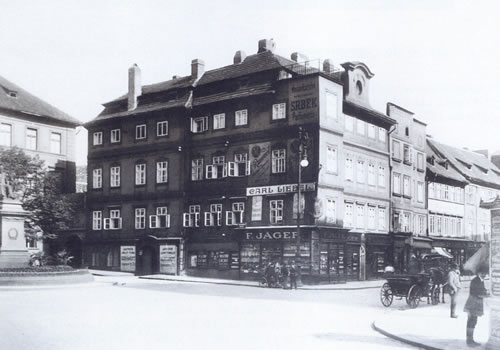
The predecessor of today’s Jungmannova Street was created after the founding of the New City of Prague by Charles IV. At first it was called Kovářská or Zvonařská, after the artisans settled here; in the 17th and 18th centuries it was called U karmelitánů, but from the 1560s it was also known as Široká.
The street received its current name in 1878, when it was named after the prominent Czech philologist, writer, and national revivalist Josef Jungmann, who lived in the now-demolished house No. 36 (Baťková 1998, 810).
At the same time, the small square at the mouth of Jungmannova street (Jungmannovo Square) also got its current name, which was first called náměstí Panna Marie Sněžné or plac proti matke Boží Sněžná, in the 19th century it was called Františkánský plácek, or U františkánů (Baťková 1998, 810).
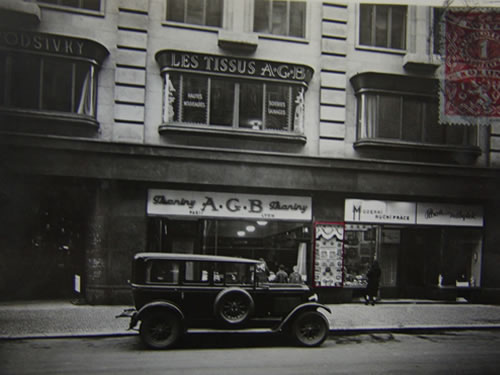
The building was commissioned to architect Fritz Lehmann, who collaborated with the insurance company on the construction of several of its other buildings, in what was then Czechoslovakia (in Ústí nad Labem, and again in Prague), and also abroad (in Sofia, Bulgaria), and permission to use the new building was received in January 1931.
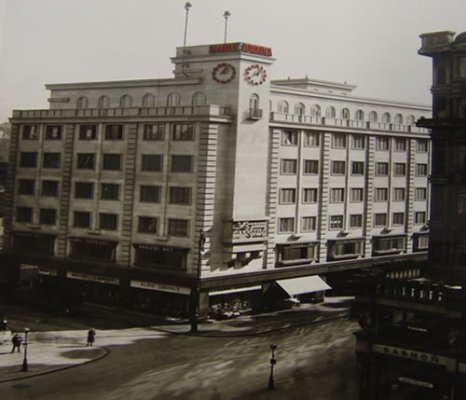
The monumental corner building is free-standing on three sides, and on the south side it adjoins house No. 749. The two main façades face Jungmannova street and Jungmannova Square, the east side faces the area of the access road to the Franciscan Garden.
The house was built on the floor plan of the letter L, it is a skeleton structure, and internally it is divided into three front sections and two left sections. On the ground floor, there is an L-shaped floor plan, supplemented by a ground-floor annex on the east side, facing the connecting road to the Franciscan Garden.
The building with two basements is five stories tall, with the last floor receding behind the front terrace, and the corner is accented by a tower that rises from the 1st floor, supported by arched brackets, and rises above the last floor in the form of a prism. On the side facing Jungmannova Street, there is a small balcony on the corner tower at the level of the last floor, accessible through a semi-circular glazed door.
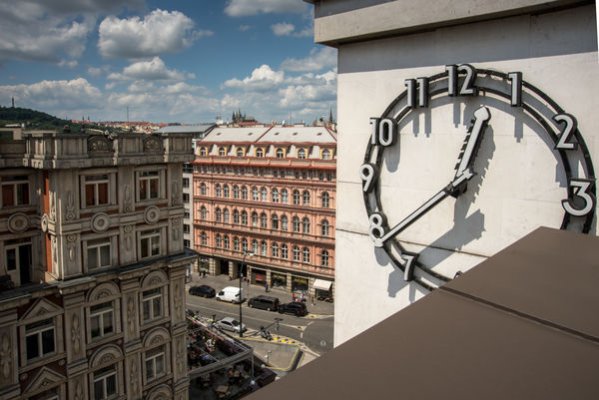
Most of the archivally documented changes in the building in question relate to the period after the end of World War II, until the present day. The first modifications after the building’s nationalization date back to the early 1950s. In February 1953, changes were proposed and agreed upon in June, consisting in the expansion of the already existing deli on the corner of the building.
Specifically, it involved the demolition of the partition between the two commercial units to the left of the arcade (as seen from Jungmannova Street) and the removal of the staircase connecting the basement to the 1st floor, which was built additionally in the late 1930s (see above). In the rear part of the shop (in the part facing the Franciscan Garden), a poultry store, a changing room, and a washroom were set up with the aid of partitions.
In September 1954, a plan was approved for the establishment of a telephone exchange on the 1st floor of the building, in the tract to the Franciscan Garden (the building permit states that the modifications will affect the mezzanine, as the 1st floor area is sometimes referred to in the relevant permits and plans up to the 90s of the 20th century - see also below).
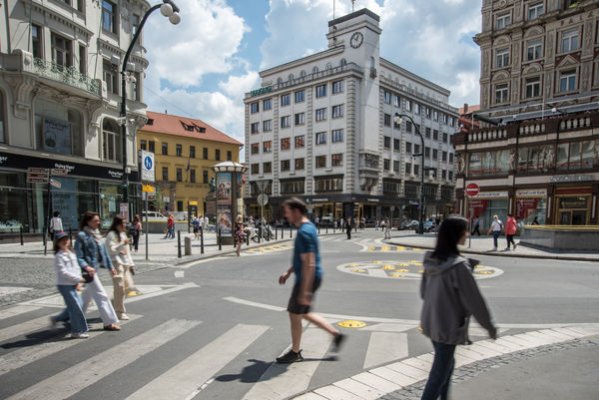
It is worth noting the layout of the 5th floor, which strangely corresponds in its main features to the approved condition from 1930. The approval drawing of the new building shows that during construction there were substantial changes to the layout, compared to the original plan.
From a functional point of view, it was significant that the originally designed apartments on this floor were not realized, and were moved to the 6th floor. The change of use was then separately approved by the building authority in 1931. In the interwar period, the fashion salon Podolská was located on the entire floor, which after 1948 was changed to the state enterprise EVA. The landing is compared to landings of the 2nd-4th floors again significantly narrower (as in the 1st floor).
From it, on the narrow sides, you entered the twisted corridors leading to the workshops, offices and “salons” (customer rooms of the clothing factory). The twisted corridors are still partly visible in the floor plan, and in the northern section were the workshops of the plant, considerably more spacious than today’s offices in this location.
The centrally located door in the western wall of the landing opens into a large room (the width of the three window axes of the street frontage), which was the showroom of the Podolská salon (now a meeting room). This large room is essentially the only space where the original craftwork interior fittings have been partially preserved.
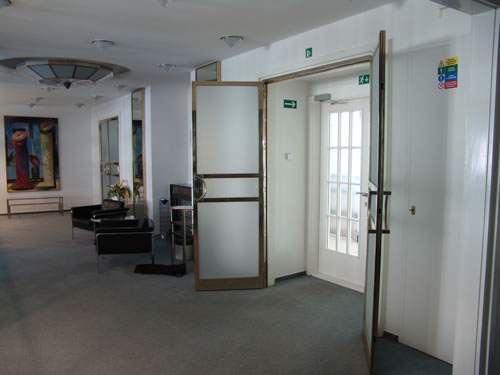
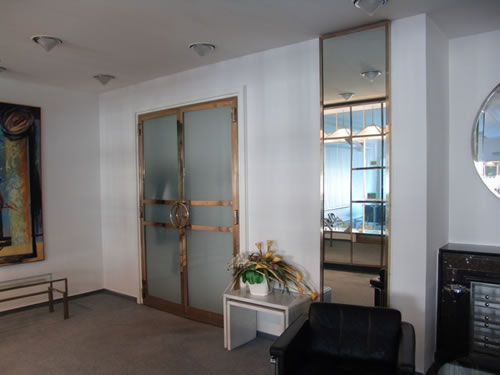
The Golden Cross Palace and the present
In recent years, the building has undergone a number of renovations, especially on the ground floor of the building, where the unsightly brass panelling of the display windows was replaced, which was supplemented with stone elements in the lower part…
Continue to present